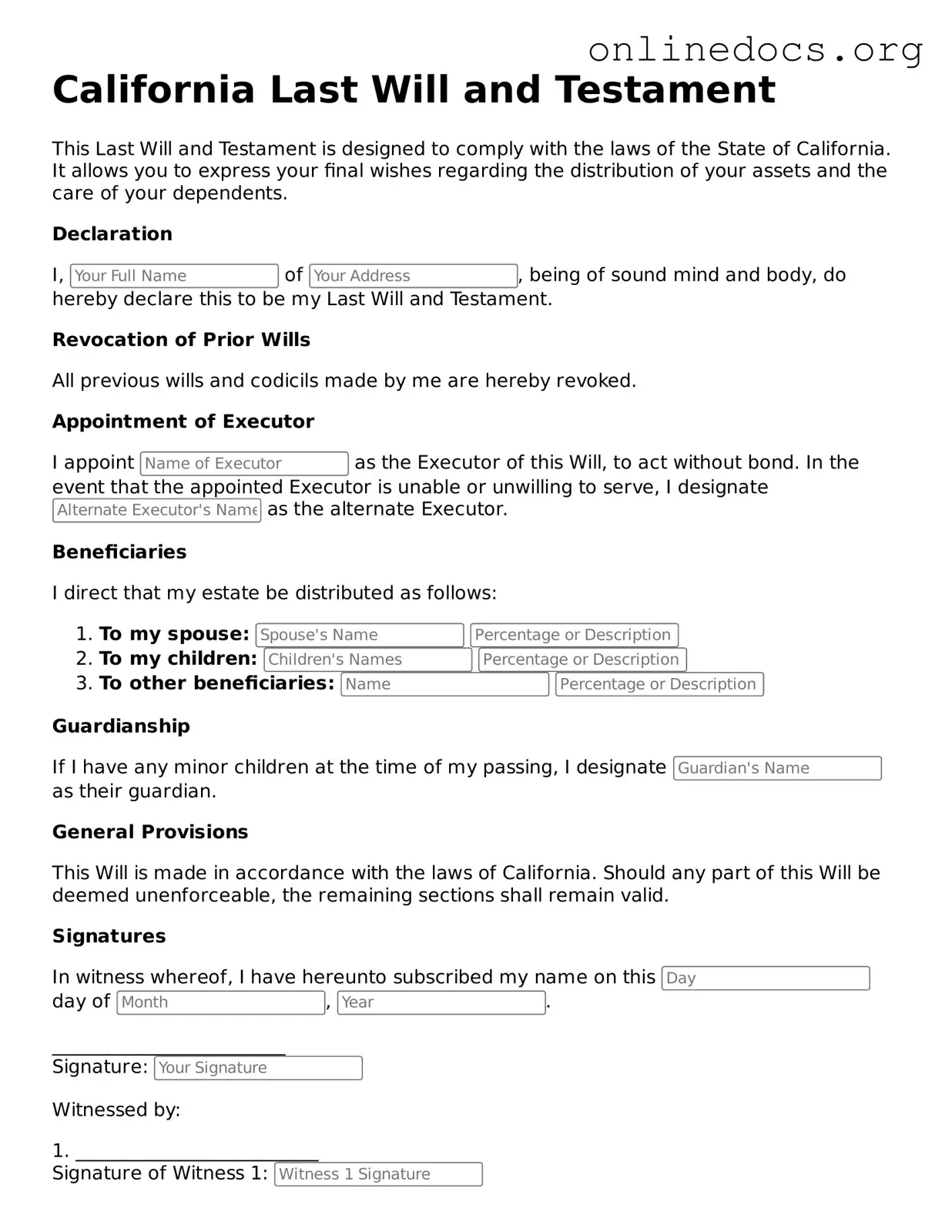The California Last Will and Testament form shares similarities with a Living Will. While a Last Will outlines how a person's assets will be distributed after their death, a Living Will focuses on medical decisions during a person's lifetime. Specifically, a Living Will allows individuals to specify their preferences regarding medical treatment in case they become incapacitated and cannot communicate their wishes. Both documents serve as essential tools for ensuring that a person's desires are honored, but they operate in different realms—one concerning the distribution of assets and the other pertaining to healthcare decisions.
Another document akin to the California Last Will and Testament is the Trust. A Trust allows individuals to transfer their assets into a legal entity that can manage those assets on behalf of beneficiaries. Unlike a Last Will, which takes effect only after death, a Trust can be operational during a person's lifetime. This distinction provides an added layer of flexibility and control, as individuals can dictate how and when their assets are distributed. Both documents aim to facilitate the transfer of wealth, yet they do so in fundamentally different ways.
If you are considering transferring ownership of property, accessing a streamlined process can be invaluable. Check out this essential guide on how to properly complete a Bill of Sale form requirements for a clear and effective transaction.
The Durable Power of Attorney is also comparable to the Last Will and Testament. This document grants a designated person the authority to make financial or legal decisions on behalf of another individual if they become incapacitated. While a Last Will comes into play after death, a Durable Power of Attorney is effective during a person's lifetime. This proactive approach ensures that someone can manage a person's affairs when they are unable to do so themselves, highlighting the importance of planning for both the present and the future.
Lastly, the Revocable Living Trust bears similarities to the Last Will and Testament in that both are used for estate planning. A Revocable Living Trust allows individuals to retain control over their assets while designating how those assets should be distributed upon their death. Unlike a Last Will, which must go through probate, a Revocable Living Trust can help avoid this lengthy process, allowing for a smoother transition of assets to beneficiaries. Both documents serve the ultimate goal of ensuring that a person's wishes regarding their estate are fulfilled, but they differ in their execution and implications for asset management.
